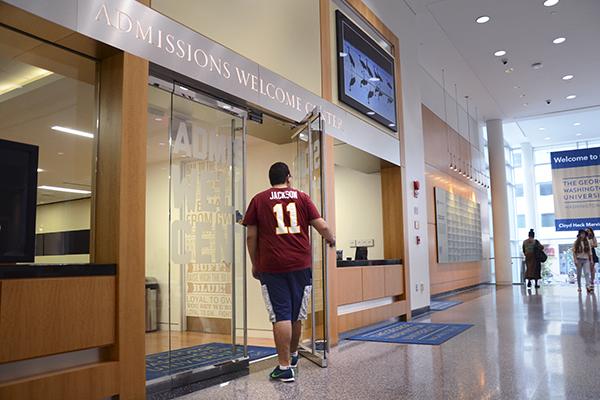Officials have taken another step on the road to make GW more accessible to a larger group of students.
Last week, GW announced a partnership with a nonprofit organization that provides scholarships to low-income high school graduates, the second announcement since August, geared toward opening up the University to students who may not have necessarily considered GW as an option before.
Say Yes to Education grants are awarded to students in participating communities with a family income at or below $75,000. GW will work with Say Yes chapters in Buffalo, N.Y., Syracuse, N.Y. and Guilford County, N.C.
Before eligible students can receive Say Yes scholarships, they must complete the Free Application for Federal Student Aid and wait for federal, state and university loans and grants to roll in, according to the nonprofit’s website.
Only then can partner colleges foot the rest of the bill so that Say Yes students can attend tuition-free. Senior Associate Provost for Enrollment Management Laurie Koehler said the partnership is funded by both Say Yes and GW.
Say Yes fundraises within local communities for scholarships to public, in-state schools, but private universities are the primary source of funding when Say Yes students attend those institutions.
Koehler also said that applicants from Say Yes communities would “not be treated differently” than other applicants during the admissions process.
“Students who apply from these communities will be read in the same holistic way that all other students are reviewed,” she said. “As we have stated before, admission officers conduct all initial reads without regard to family income, but at the end of the process, GW may consider financial need among other factors as we finalize decisions.”
The University publicly announced for the first time nearly two years ago that it is need-aware, meaning a portion of students are placed on the waitlist every year if they cannot afford to pay tuition.
The partnership is another way officials are hoping to attract a more diverse group of students to GW. Tuition crossed the $50,000 threshold for the first time last year.
“The University was introduced to the Say Yes to Education foundation last year and after exploring the potential. We felt that the possibilities were endless,” Koehler said.
In August, the University announced it would no longer require applicants to submit SAT or ACT scores, a move that officials said was an effort to promote economic diversity. In another access effort, staff in the admissions office helped students at a local high school fill out college applications last year.
University President Steven Knapp created a task force in January 2014 to develop a strategy to help low-income students attend GW. The group’s leader, former Vice Provost for Diversity and Inclusion Terri Harris Reed, stepped down last week.
Say Yes’ chapters in New York and North Carolina include after-school programming for public school students and community-based fundraising for college scholarships. It also has cohorts in public schools in Philadelphia, Hartford, Conn. and Harlem, N.Y.
Ten of GW’s 14 peer schools, like Georgetown and Tulane universities, are partnered with the nonprofit.
Frances O’Connell Rust, the director of teacher education programs at the University of Pennsylvania Graduate School of Education, said students who come from low-income families may struggle in the four-year university environment, even without the looming burden of debt.
“Kids can’t go somewhere until they feel safe,” she said.
Students from low-income families have historically struggled more than their high-income peers at the university level. An annual Department of Education study shows that wealthier undergraduate students with mediocre math scores graduate at the same rate as low-income students with high math scores.
Rust said the University of Pennsylvania is partnered with The Posse Foundation, which also provides full-tuition scholarships to low-income students. But Posse scholars are sent to universities in groups of about 10 so they have a built-in support system, as well as mentors who meet with the students once every two weeks for the first two years of college.
The program boasts 90 percent graduation rates for participants, as well as praise from President Barack Obama.
“[Say Yes] sounds wonderful,” Rust said. “I think the question to ask is, ‘What kinds of support come along with this?’”








